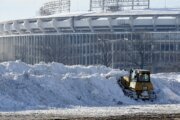WASHINGTON — It’s called the dead zone and while it happens every year in the Chesapeake Bay, this August it’s particularly bad, affecting fish and shellfish that make their way to dinner tables.
Bruce Michael, with the Maryland Department of Natural Resources, monitors oxygen levels in the bay year-round; he says this summer’s annual dead zone has grown to the eighth-largest size ever recorded.
It starts each year with a spring algae bloom.
“This algae bloom then dies, settles to the bottom and uses up the available oxygen in the water through decomposition,” says Michael.
It sucks the oxygen out of the deepest parts of the bay, making it difficult for fish and shellfish to survive.
“This runs from right around the Bay Bridge to the Potomac River,” he says.
July oxygen levels were better than average. August, however, was worse. Michael says the dead zone should break up as September ushers in cooler temperatures.
Follow @WTOP on Twitter and WTOP on Facebook.







